At first glance, it’s clear that the TCL A300 NXTVision aims to be more than just an ordinary television. It offers a picture display mode that – unlike competitors from Korea, Samsung The Frame – is completely free. Additionally, just like its rivals, extras are included at no charge. In the packaging, alongside the television, we find extra frames that mimic light wood and a flat wall mount, allowing the television to truly resemble a gallery piece. When it comes to everyday use, the standout feature is the Google TV system – comprehensive, fast and offering access to a massive number of apps. And if we feel like stepping out of the digital museum and jumping straight into the gaming world, the A300 can surprise us. With two HDMI 2.1 ports, 144 Hz, VRR, ALLM, and a very low input lag, even demanding gamers can feel at home here. Well... perhaps except for those sensitive to motion blur – as this remains one of the bigger issues with this model. There are also downsides. While the picture mode is free – which is commendable – the actual quality of the available graphics falls noticeably short compared to what Samsung offers in its paid ART Store. The displayed images resemble photos rather than realistic reproductions of artworks. Unfortunately, the A300 – much like the competing Hisense S7NQ – performs poorly here and additionally has some software issues. The brightness of the television itself also leaves much to be desired – it’s the dimmest of the “framed trio,” which translates to average daytime viewing and limited HDR effect. Nevertheless, the TCL A300 NXTVision is a reasonably sensible alternative to Samsung The Frame or S7NQ – especially if we are looking for a cheaper solution without additional charges for access to the “gallery” mode and with an operating system that doesn’t limit us in any way regarding the number of apps. However, it’s important to remember that this is a proposal with a lot of compromises. If we want to save a bit and don’t expect top-notch picture quality, the A300 can hit the visual bullseye. Otherwise, it’s worth looking at its competition.
- Matching (Score)
- Our verdict
- TV appearance
- Where to buy
- Contrast and black detail
- HDR effect quality
- Factory color reproduction
- Color reproduction after calibration
- Smoothness of tonal transitions
- Image scaling and smoothness of tonal transitions
- Blur and motion smoothness
- Console compatibility and gaming features
- Input lag
- Compatibility with PC
- Viewing angles
- TV efficiency during daytime
- Details about the matrix
- TV features
- Apps
- Playing files from USB
- Sound
TCL A300W NXTVision vs LG OLED B5
Direct compare
A300W / A300W PRO / NXTVision

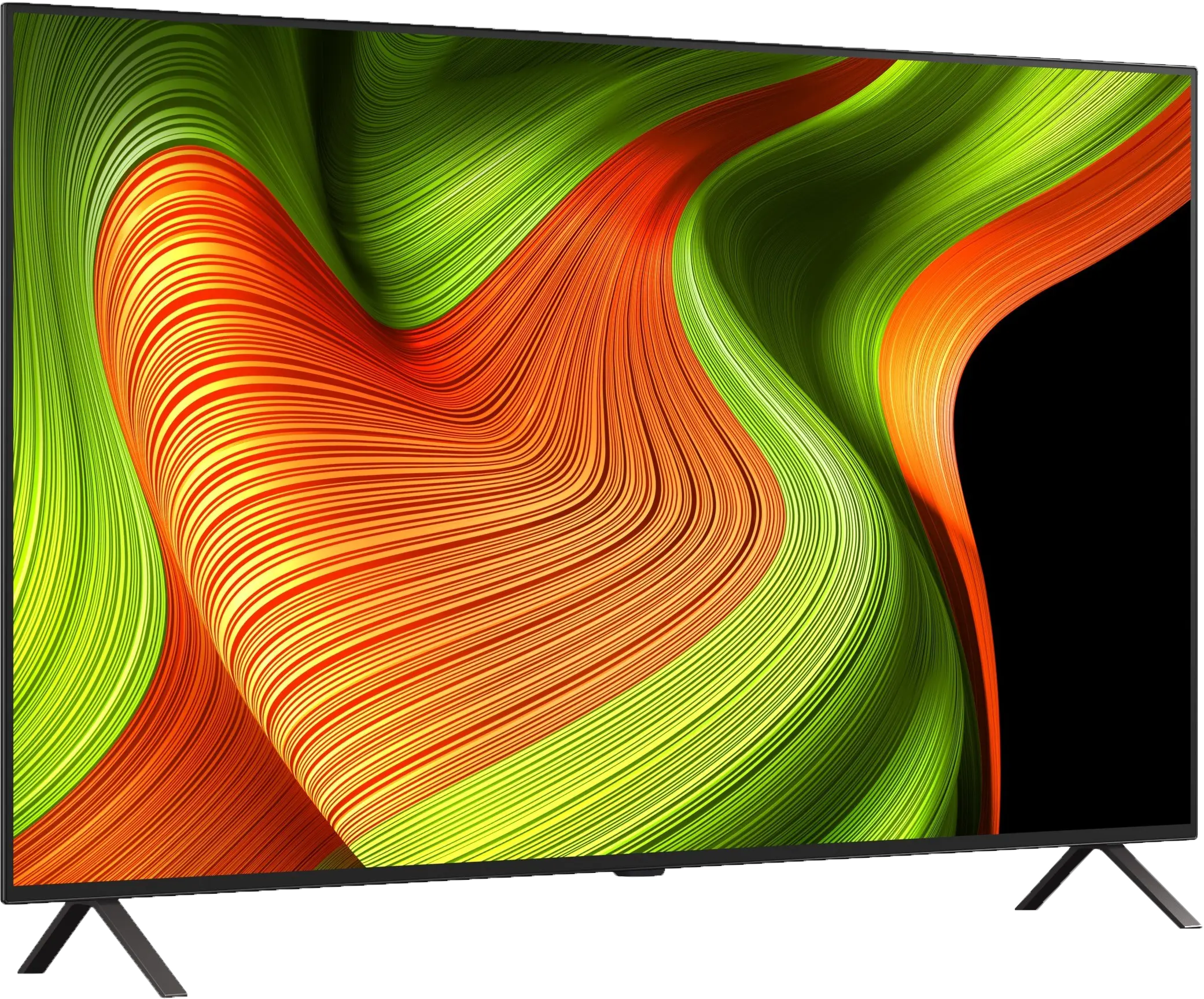
Panel type: LCD VA
Resolution: 3840x2160
System: Google TV
Model year: 2024
Complete the survey to find out the result

Panel type: WRGB OLED
Resolution: 3840x2160
System: WebOS
Model year: 2025
Complete the survey to find out the result

Overall rating
6.6
7.8
Movies and series in UHD quality
6.2
7.9
Classic TV, YouTube
6.0
8.6
Sports broadcasts (TV and apps)
5.9
8.5
Gaming on console
8.2
9.2
TV as a computer monitor
8.2
7.6
Watching in bright light
4.7
4.9
Utility functions
7.7
8.3
Apps
9.6
8.7
Sound quality
6.0
7.0
Complete the survey to find out what fits your preferences
Advantages
Frames styled like a picture in the set
Bracket included
VA matrix with decent contrast
Supports all popular HDR formats, including Dolby Vision and HDR10+
Great for gamers: VRR, G-Sync, ALLM, low input lag
High refresh rate - 144Hz
Free "picture mode"
Supports DTS:X and Dolby Atmos
GoogleTV operating system with the largest app base
Perfect black and contrast
Pleasant HDR image
Excellent colour reproduction capabilities
120Hz OLED panel - great motion smoothness
4 HDMI 2.1 ports and full support for gamers (VRR, ALLM, Dolby Vision Gaming, HGiG)
Very low input lag
Proper content scaling and good digital processing
Convenient webOS system with Magic remote
Built-in USB recording function from the built-in DVB-T/T2 tuners
Disadvantages
Low brightness
Motion blur issues
No recording function on USB or PiP
Inferior image quality in "art mode" compared to Samsung The Frame
Colours and blacks fade significantly in sunlight
No VESA standard
Software bugs
Average brightness and poor performance in bright rooms
No support for DTS formats
Different versions of the remote in derivative models – hard to predict which version we will get
Our verdict
LG B5 is a really good OLED TV that shows you don’t need to spend a fortune for very good quality. It offers deep blacks typical of organic panels, very good colour reproduction – especially after calibration – and pleasant HDR movie watching experiences. All of this makes for evening screenings that can deliver cinematic emotions even without reaching for much more expensive screens. The fluidity of the image and the set of features for gamers also deserve recognition. The 120 Hz panel, low input lag, full support for HDMI 2.1, variable refresh rate, and Dolby Vision Gaming mode make the B5 a very versatile screen – great for both gaming and watching sport. The friendly webOS system, along with the Magic remote, provides convenient access to content and makes operation easier. However, not everything is perfect. Compared to the B4 model, there is a slight drop in brightness, especially in very bright rooms. For some users, the lack of DTS audio support may also pose a problem, which could necessitate some workarounds when connecting Blu-ray players. Still, LG B5 remains one of the most sensible choices for those looking to step into the world of true cinema – without overpaying, but also without making major compromises. It’s a screen that doesn’t need to prove anything – it simply delights the eye with great picture quality and works as it should.
TV appearance






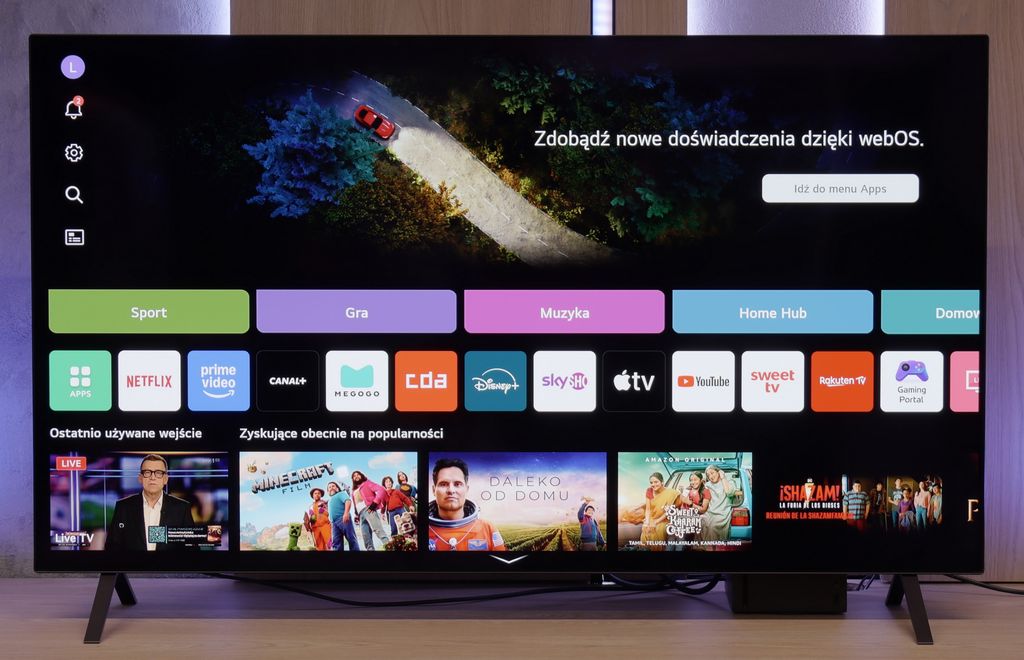
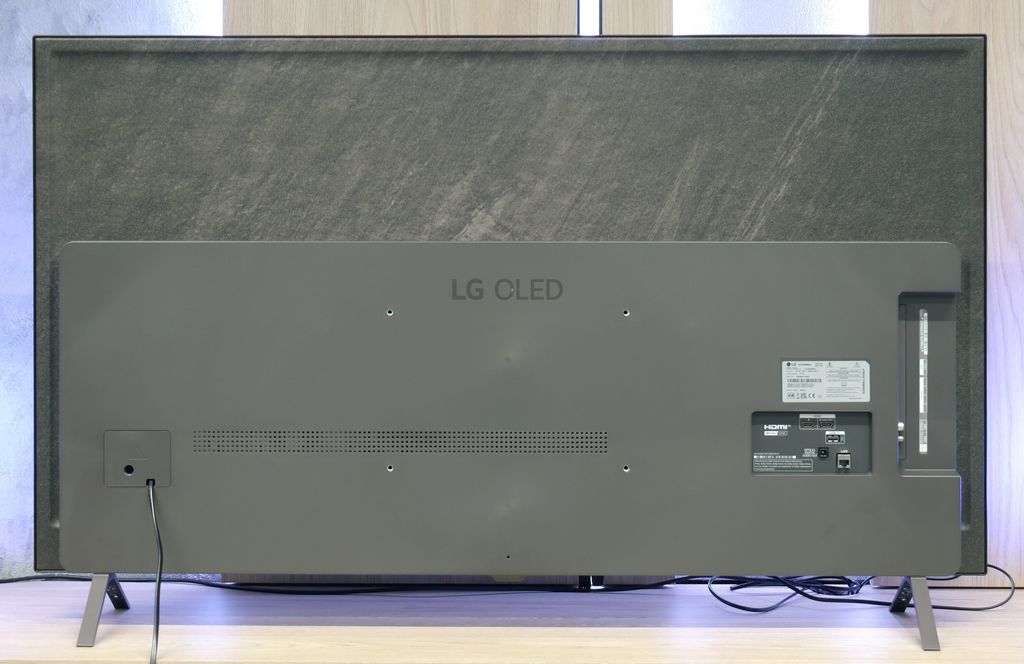

Contrast and black detail
5.5/10
10/10
Local dimming function: No
Contrast:

Result
5,000:1

Result
5,450:1

Result
3,800:1

Result
4,000:1

Result
3,950:1

Result
∞:1

Result
∞:1

Result
∞:1

Result
∞:1

Result
∞:1
Halo effect and black detail visibility:


TCL A300, also known as NXTVision, uses a VA panel, so from the outset, decent contrast could be expected. On our test screens, the television indeed showed typical results for this type of panel – in the best case, the contrast reached around 5000:1, which is not a bad result for this segment.
However, it should be noted that the model is not equipped with any local dimming technology, which unfortunately is evident in practice. Black, although at times quite deep, often turns into navy blue or grey – especially in darker scenes. In short: for a television without local dimming, it’s not bad, but it shouldn't be compared to models that already have such a feature on board.
If you're looking for changes compared to last year's LG B4, we’ll clear up any doubts straight away – you won’t find any in this category at all. And that’s a good thing. Because how do you improve something that is already close to perfection? The LG B5, as a WOLED organic panel television, offers black scenes as dark as tar and contrast that’s hard to find even in the most expensive LCD screens. The screen is as clear as a bell – no bleeding, no streaks, no halo effects that can ruin the atmosphere in cinematic scenes. Here, everything is in its place. Details separate from black with surgical precision, nothing blurs together, even in the most demanding sequences from films like The Revenant or Oblivion. This is the type of television that can truly enchant you, especially when the room goes completely dark. When the lights go out, the LG B5 takes centre stage – and it does so wonderfully. In these conditions, OLED shines the brightest, and even top-end LCD models – despite advanced dimming and hundreds of zones – simply fall behind.
HDR effect quality
4.9/10
6.2/10
Luminance measurements in HDR:

Result
357 nit

Result
348 nit

Result
338 nit

Result
350 nit

Result
389 nit

Result
587 nit

Result
593 nit

Result
628 nit

Result
589 nit

Result
470 nit
Scene from the movie “Pan” (about 2800 nits)


Scene from the movie “Billy Lynn” (about 1100 nits)


Static HDR10


Dynamic: Dolby Vision
Dynamic: Dolby Vision


HDR luminance chart:
LG OLED B5
Luminancja HDR
Luminance of RGB colors
TCL A300W NXTVision
Luminancja HDR
Luminance of RGB colors
When it comes to brightness, the TCL A300W is definitely the dimmest TV among all frame-style models, such as Samsung The Frame or Hisense CanvasTV – and unfortunately, you can see that right away. In our measurements, peak luminance reached only around 400 nits, and on test movie screens, this value dropped to 350 nits. That’s definitely too little to feel the real "magic" of bright HDR effects. As a consolation – the TV is equipped with a PFS LED coating (which is something like QLED), which provides very good coverage of a wide colour gamut, both DCI-P3 and BT.2020. In addition, there is full support for all popular HDR formats – HDR10, HDR10+, HLG, and Dolby Vision – which somewhat compensates for the shortcomings in brightness and helps improve the overall experience of materials in this quality.
LG B5 is a moderately bright OLED TV. Regardless of the scene – it can generate about 500 nits of peak brightness. And interestingly, it does this even in full-screen shots flooded with white, where most OLEDs usually struggle. So, is this screen suitable for HDR films? Yes – absolutely, because such brightness really allows you to feel the magic of HDR effects. However, it’s worth noting that compared to last year's B4 model, the new B5 is darker – by about 100 nits. It may seem like a small amount, but at such average peak values, it makes a significant difference. Fortunately, the TV makes up for it with another strength – excellent coverage of the DCI-P3 and BT.2020 colour gamuts. This means HDR films look truly vibrant, lively, and impressive even in more demanding scenes.
Factory color reproduction
5.9/10
8.2/10


Factory Mode
After calibration


Factory Mode
After calibration
TCL A300 offers several picture modes, but without a doubt, the movie mode performs the best. Unfortunately, even though it is the best option available, it is not free from errors. Both in HD and HDR content, the image has a noticeably too warm hue – it has a slight pink tint, which is particularly noticeable in snowy scenes. Instead of pure white, we get a pinkish coating that spoils the natural perception of colours.
The management of brightness is also lacking. In the case of older HD materials, the image often seems too dark – confirmed by an elevated gamma value. Conversely, with HDR content, the effect is the opposite – the image is overly bright, as we observed in scenes from the film Pan. Such a lack of consistency also affects colour accuracy – a test with a ColorChecker showed that many samples clearly deviate from reference values.
Fortunately, TCL allows for manual adjustment of settings, so we decided to check how the television would perform after our professional calibration. The effects of this adjustment are described below.
B5 was tested in Filmmaker mode and… we’d love to see more TVs like this right out of the box. Seriously. The white balance is very well set – there’s practically nothing to nitpick. Well, if you really want to, you might notice a slight deficiency in blue, which can make the overall picture have a slightly yellowish tint. But that’s just our editorial nitpicking. Most of you probably won’t even notice. We also have minimal reservations about brightness management in HDR format. The EOTF curve – which is responsible for how the TV distributes brightness across the scene – sits just below ideal. In practice, it may happen that the darkest parts of the image appear too dark and simply… disappear. But these are details that only come out in measurements. Generally: we are impressed. But we also know that LG TVs respond very well to professional calibration. You can extract nearly reference-quality picture from them, so – although it’s already very good out of the factory – we took the liberty to go a step further and fine-tune everything to the max.
Color reproduction after calibration
8/10
9.1/10

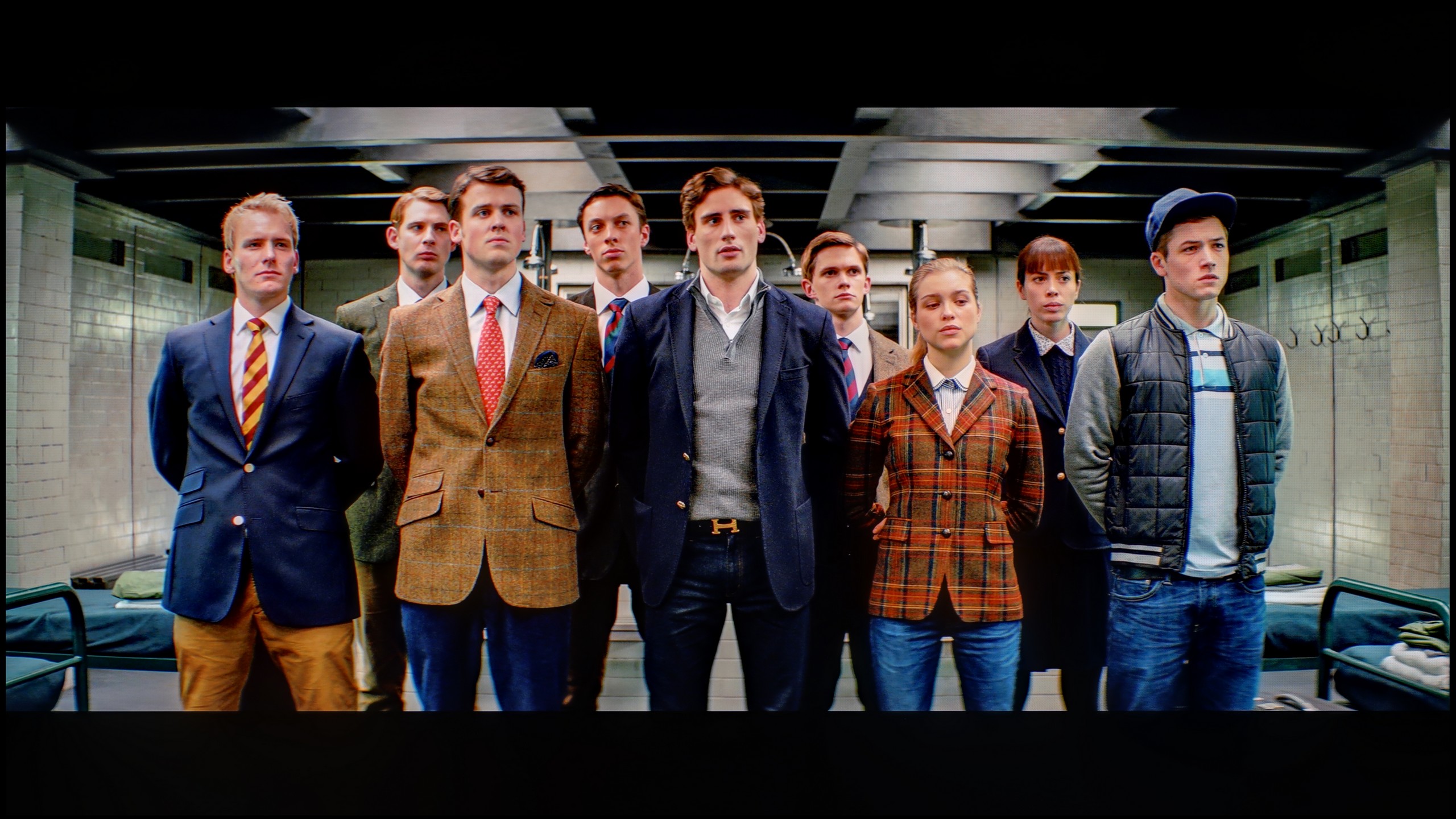

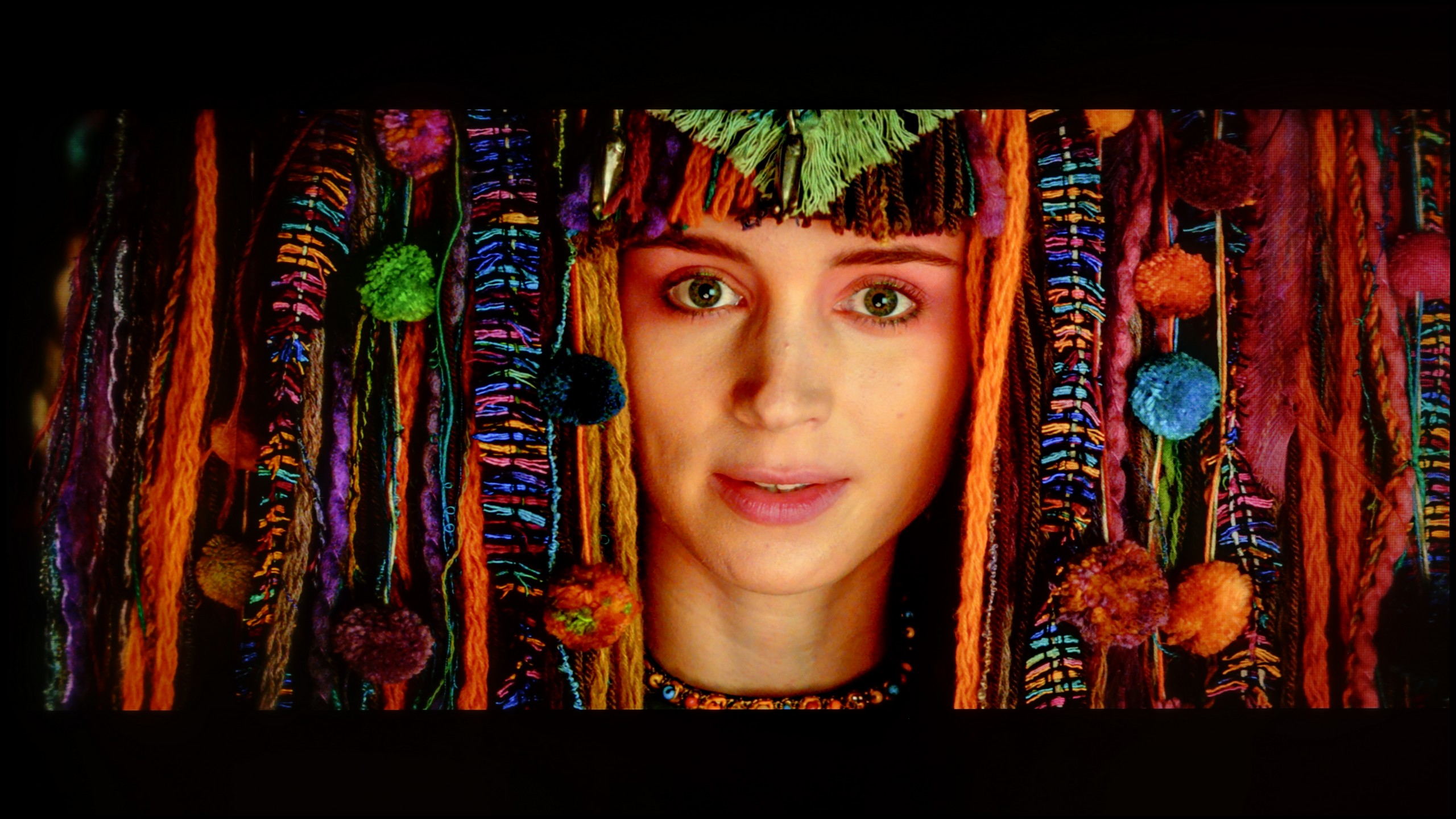
After our professional calibration, the TCL A300 has literally been given a new lease on life. The image has stopped being too warm, and the colours finally look as they should – as confirmed by the ColorChecker test, where the colour samples finally started hitting their marks, at least to some reasonable degree. It was also possible to partially correct the brightness management – the image is now more balanced and less "wobbly" between different types of content. Of course, certain limitations can't be bypassed – a slightly visible blooming effect still occurs, but that's a characteristic of the technology, not something that can be eliminated even after professional settings.
Generally: after calibration, the A300 looks significantly better and gains a whole new quality.
We have to admit that we didn't have much work with the LG B5. It's one of those TVs that look good right from the start, but after calibration… they can really impress. The white balance was nearly perfect – down to a level of errors invisible to the human eye, unless you're a professional colourist with a magnifying glass at the screen. We also managed to control the TV's tendency to slightly dim the darkest details, especially in HDR scenes. After proper tuning, everything looks cohesive: blacks remain deep but don't swallow information. Highlights maintain a natural sparkle, and colours are true to the director's vision. This is truly one of those models that show you don't have to spend a fortune to have an almost reference-quality image. If you can opt for professional calibration – it's definitely worth it for the B5.
Smoothness of tonal transitions
8.6/10
7.2/10





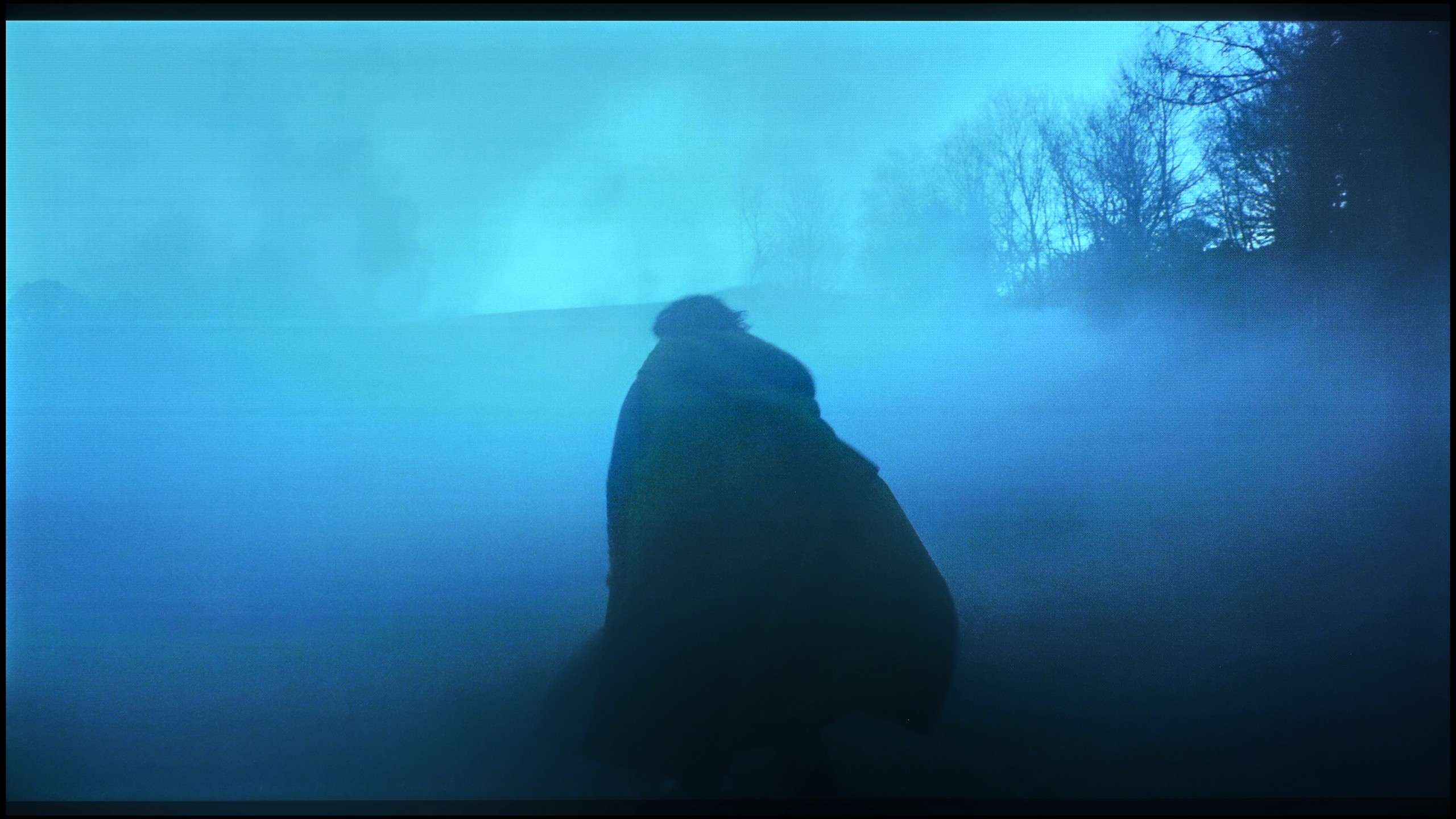

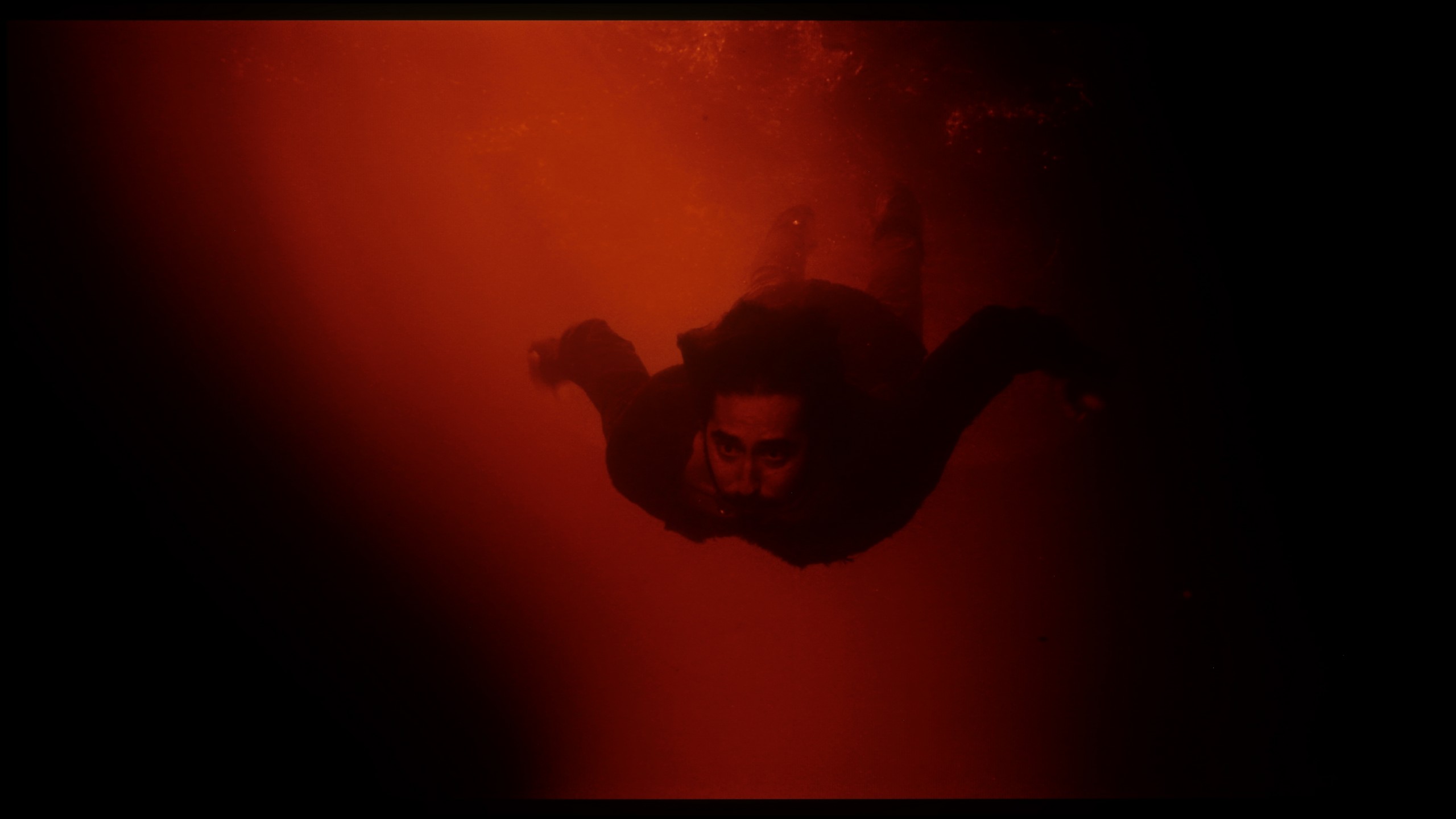




TCL A300 NXTVision is another frame-style television that really manages well with the smoothness of tonal transitions. It's hard to find distinct bands or sharp transitions between shades of one colour – it all looks natural and smooth.
However, it's fair to say that among the three tested models (The Frame and S7NQ), TCL performs the weakest in this category. In darker and lighter scenes, you can notice slight imperfections. Nevertheless, looking at it as a whole, for a television in this range – it really presents itself solidly. It might not be the best of the bunch, but it holds a very good standard.
LG B5 handles colour gradation quite decently. In bright scenes, where we have smooth transitions between skin tones, the sky or background, the TV blends colours seamlessly and without hiccups. At first glance – it’s good, particularly considering the price. But just reach for more challenging material – those darker, more demanding scenes with a lot of subtle transitions – and the problems begin. Small artifacts appear, false contours, slight thickening. It’s still not at a level that blinds or distracts from the plot, but the difference compared to more expensive WOLED models – and even more so QD-OLED screens – becomes noticeable.
Image scaling and smoothness of tonal transitions
5.5/10
7.5/10
Smooth transition function

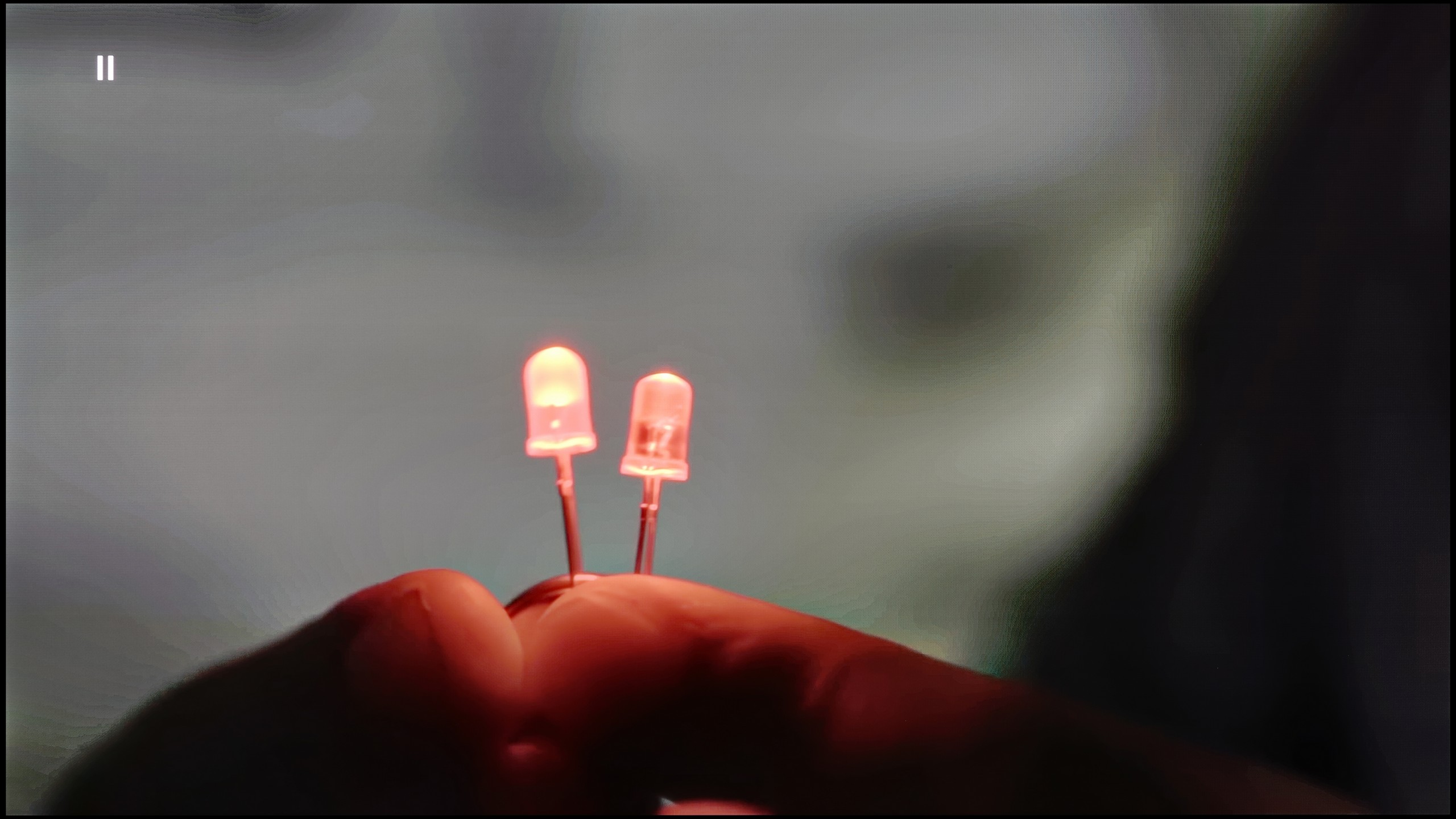
Image without overscan on the SD signal


TCL A300 handles tonal transitions in high-quality films very well, but the question arises – how does it perform with weaker materials? The TV is equipped with a tonal smoothing feature; however, its effectiveness can be described in one word: “random”. In one scene, it may work and improve the gradation, but when turned off… the effect remains the same. There is a lack of consistency and predictability here.
Image scaling is also not one of A300's strong points. On the test pattern, the main character actually looked better than on the raw signal, but with thin lines – like fonts or background details – there was noticeable jaggedness and aliasing. On the plus side, the TV does not cut off the image and has no issues with overscan, but the overall quality of scaling is rather average.
LG B5 really surprised us positively in terms of handling lower quality content. Thanks to the enhancement and smoothing features, HD or even SD materials come to life. Importantly – when this option is turned on at the "low" or "medium" level, we don’t get the impression that the image is artificially softened or overly smoothed. Details remain in place, film grain doesn’t disappear, and the edges of objects don’t look washed out 😉. It’s a really useful tool – especially if you’re watching free-to-air TV, archival materials, or content from YouTube in lower resolutions. The picture is clear, consistent, and simply pleasant to the eye.
Upgrading as such works very well – even low-quality content is reproduced with surprising fidelity. Unfortunately, it’s not without a minor hiccup. Although the menu has an option to turn off overscan, the television still has issues correctly displaying very low-resolution images. It’s a minor detail, but when watching older materials – it can be annoying.
Blur and motion smoothness
6.4/10
8.5/10

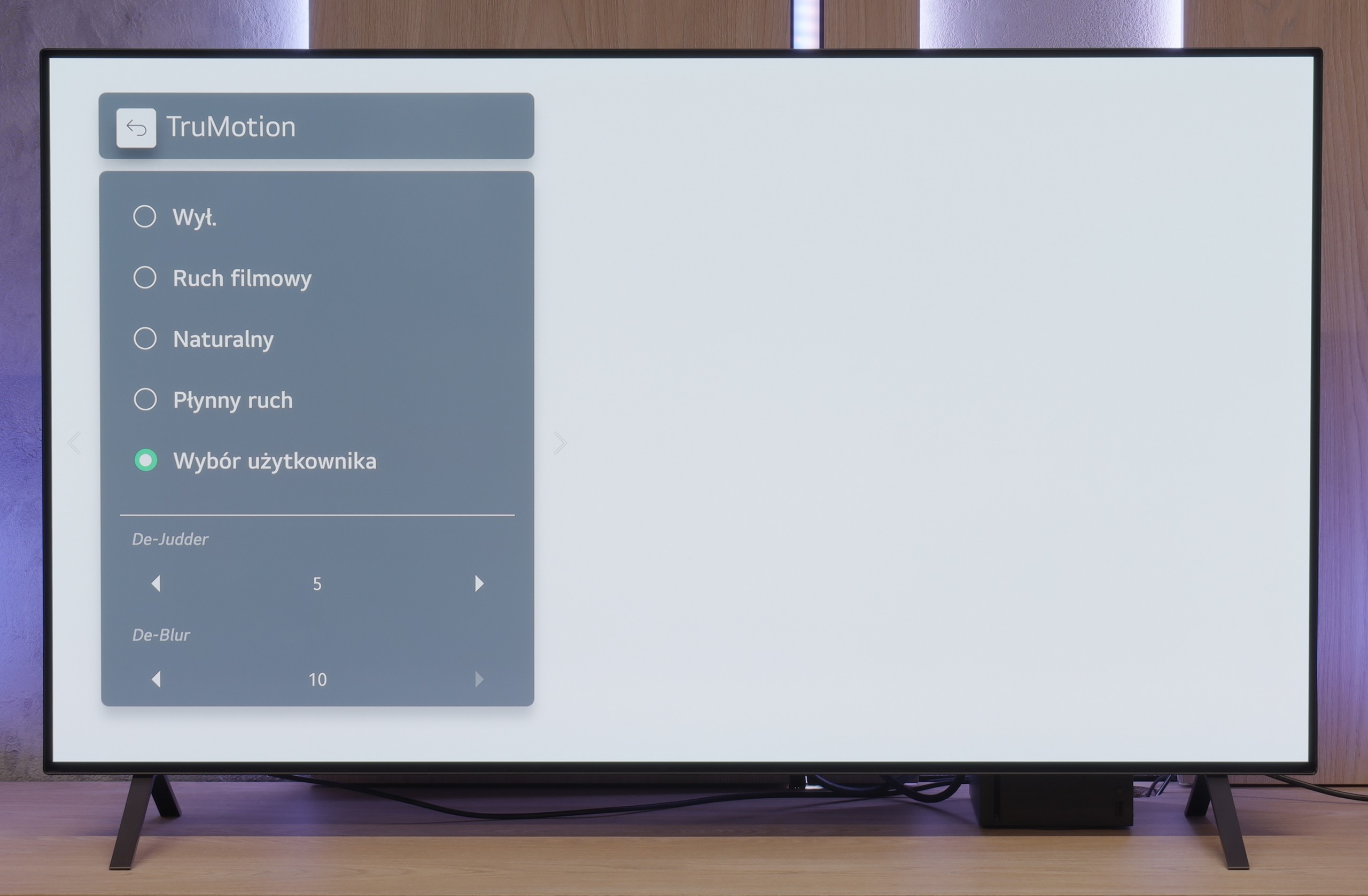
Blur (native resolution, maximum refresh rate):






TCL A300 is equipped with a 144 Hz panel, which should instantly satisfy virtually everyone - both gamers and sports fans. Motion is fluid and the image is clear even during fast scenes. Additionally, the television offers a motion enhancement feature called "Motion," where we find two sliders on a 10-point scale. These allow you to adjust the effect to your own preferences - from a classic, filmic look with visible frames to a very smooth (though already unnatural) image reminiscent of a soap opera effect. This way, everyone can find a setting that suits them.
LG B5 is a TV with a 120 Hz OLED panel. It may not sound as impressive as the marketing terms "144 Hz" or "165 Hz" commonly found in gaming monitors, but honestly? The smoothness is still excellent. The picture is sharp, fluid, and simply enjoyable to watch – even when there’s a lot happening on screen. The organic panel does its job – the pixel response time is almost instantaneous, which means there’s no risk of ghosting or blurring that can ruin dynamic shots. Sports, fast-paced games – everything looks clear and distinct.
We also have the classic LG motion smoother, TruMotion. It allows you to smooth out movies shot at 24 frames – in other words, most of what you watch on Netflix or from Blu-ray discs. If you set lower values on the “De-Judder” slider, you’ll get a picture closer to the cinematic experience – with a slight judder, but without artificiality. Higher settings? Soap opera effect guaranteed. Fortunately, LG gives you the choice, and you can tune everything to your liking.
Console compatibility and gaming features
9.8/10
10/10
- ALLM
- VRR
- VRR range48 - 144Hz40 - 120Hz
- Dolby Vision Game Mode
- Correct implementation of HGIG
- 1080p@120Hz
- 1440p@120Hz
- 4K@120Hz
- Game bar

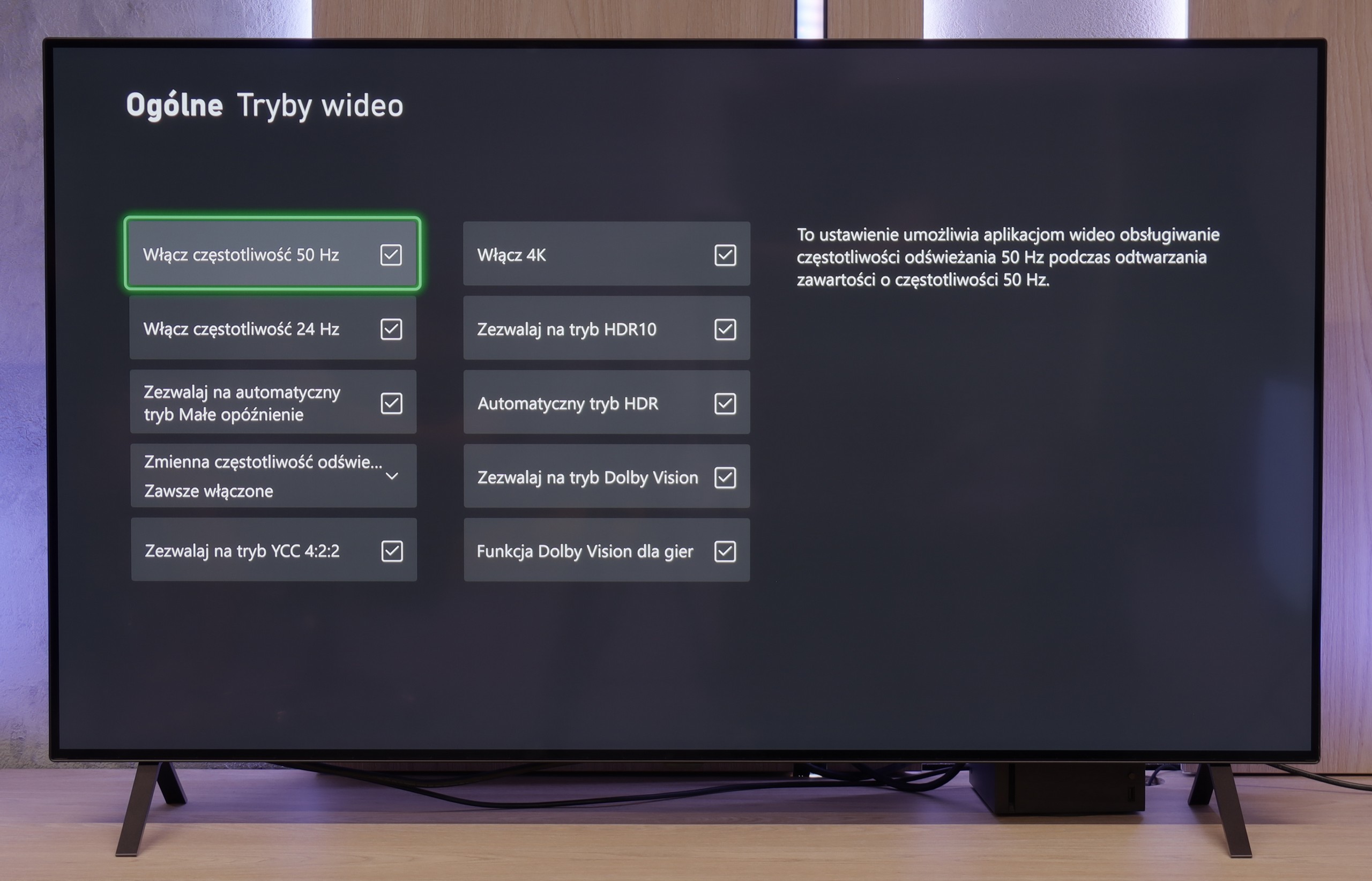

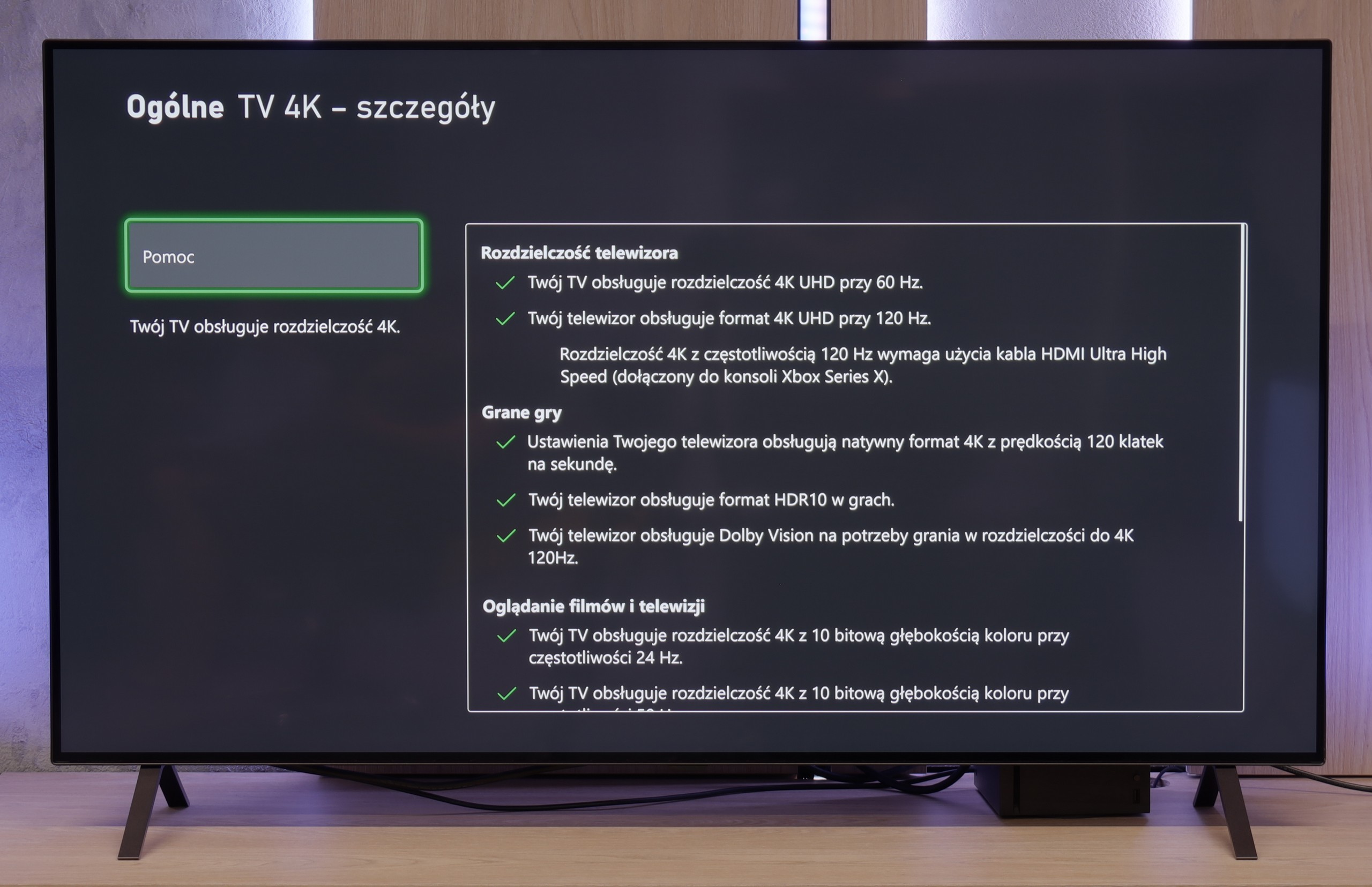

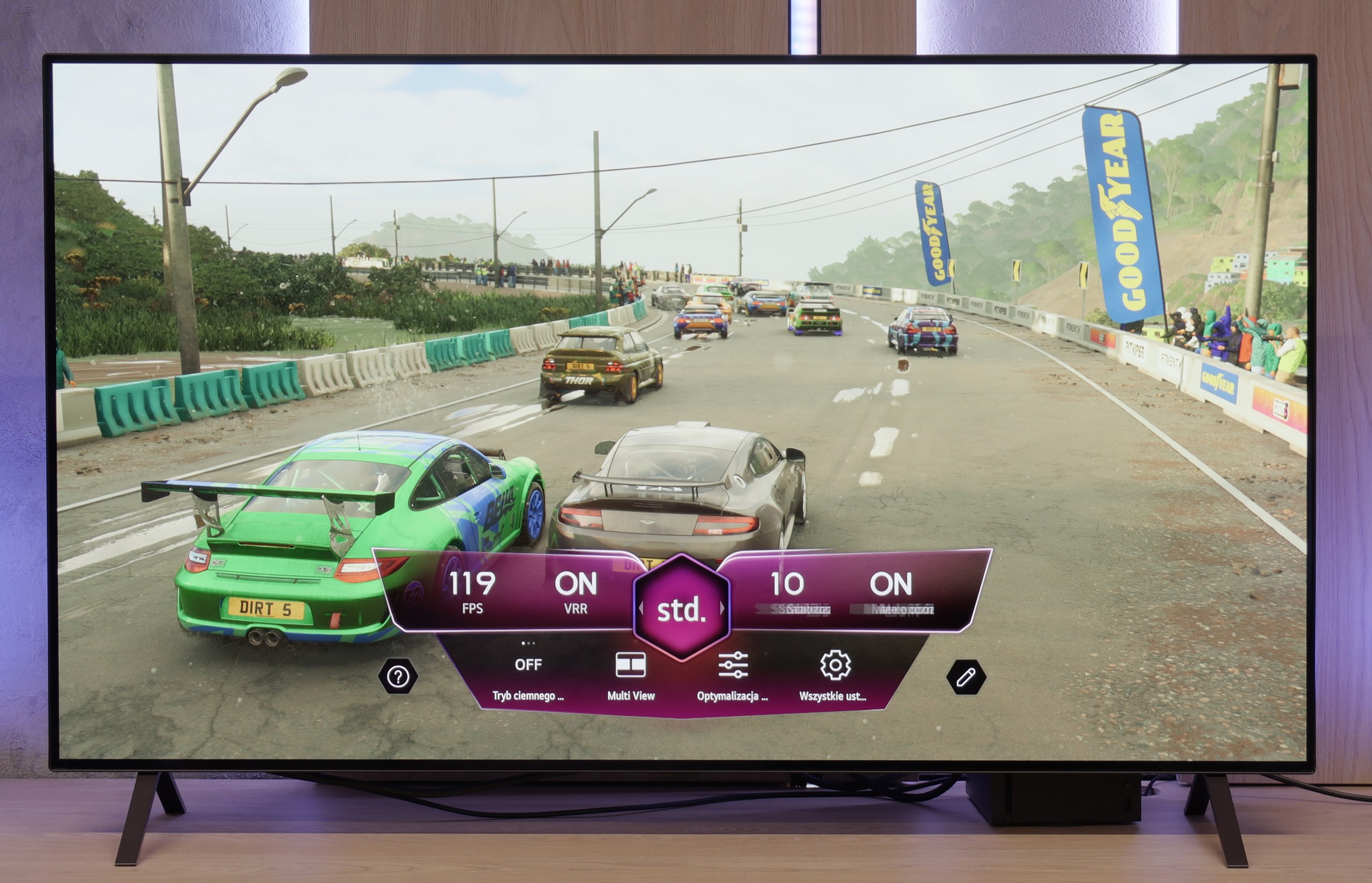

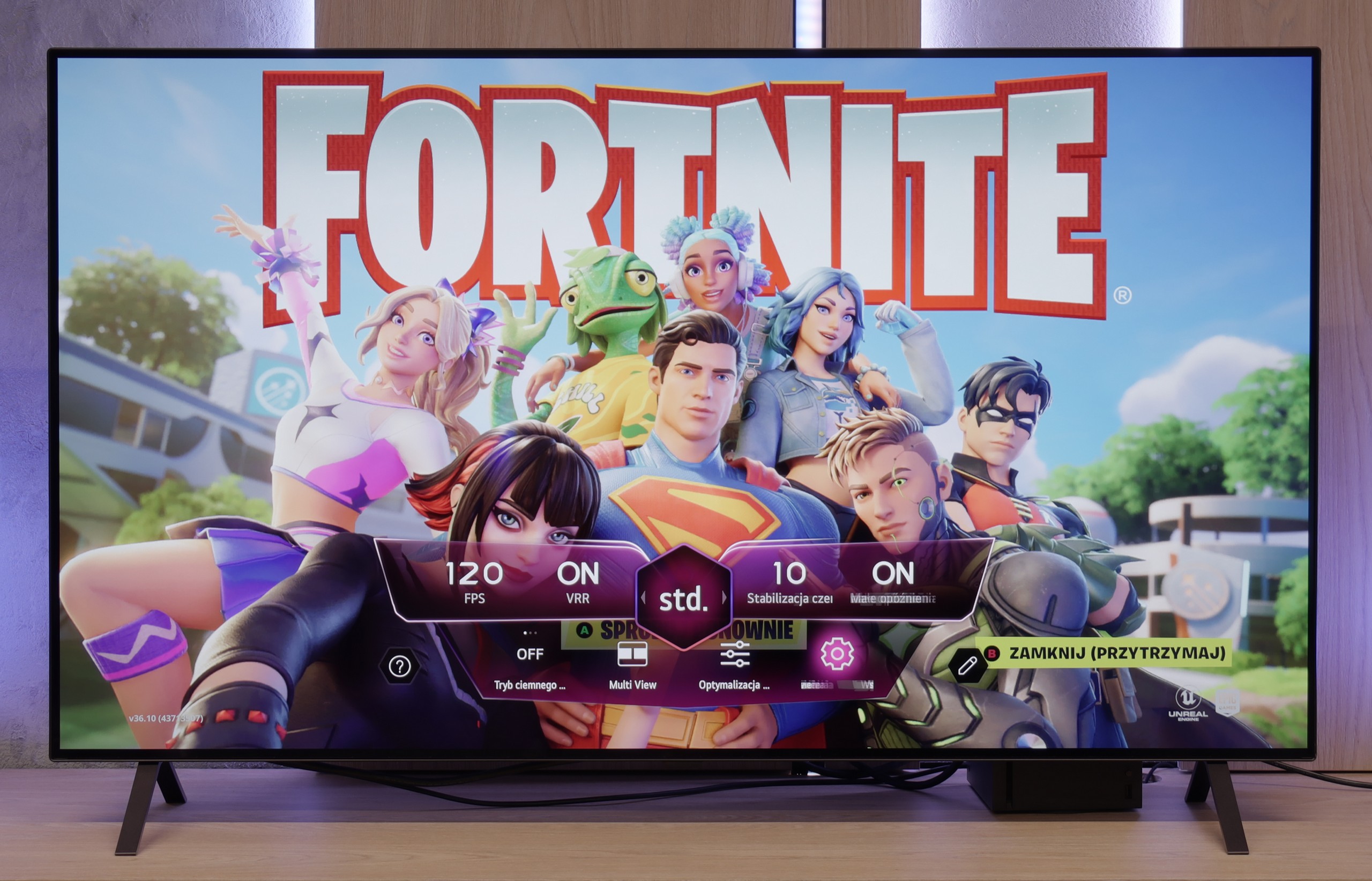
The TCL A300 is a television designed not only to transport us to a digital art museum but also into the full-fledged world of gaming. It offers practically everything you can expect from gaming hardware: two full-bandwidth HDMI 2.1 ports, 144 Hz refresh rate, support for VRR and ALLM.
It also deserves credit for the proper implementation of the HGIG mode – something that competing Hisense sometimes struggles with. The television handles lower resolutions (e.g., Full HD) with ease while maintaining high refresh rates, which will be appreciated by owners of older consoles or PCs.
Additionally, there's an attractive and clear GameBar that facilitates quick access to settings for gamers. The A300 is indeed well-prepared for gaming at the highest level – it’s just a shame that issues with ghosting somewhat detract from its overall appeal as a gaming device.
There are already a few TVs on the market with the "for gamers" label that don't really understand what that means. The LG B5 is not one of them. Everything here is spot on – there are four HDMI 2.1 ports, 120 Hz, there’s VRR and ALLM, and there’s also a Game Bar that's actually useful, not just looking good in the brochure. You plug in a console – it works. You set it to 4K at 120 Hz – it works. You have an Xbox and want to play in Dolby Vision – it works too. And it's not just "theoretically supports," it actually turns on, looks good, and you don't have to fiddle with settings for half an hour. Plus, there’s the HGiG picture mode, which LG has implemented correctly – meaning HDR in games doesn't turn the screen into a strobe light, but shows exactly what it should. There are no surprises, no strange limitations, no "buts." And you know what? That's how it should be. Cheers to the LG B5!
Input lag
9.7/10
9.9/10
SDR
HDR
Dolby Vision
In terms of input lag, the TCL A300 performs really well. Values below 10 ms at a refresh rate of 120 Hz are something many gamers dream of – such low lag is practically unnoticeable, both during everyday gaming and in more demanding esports titles. One could nitpick about the result of 23 ms in Dolby Vision mode at 60 frames, but it's still low enough that serious objections are hard to come by. In this category, the A300 truly excels.
Here we won’t be going on about it – the LG B5 simply has great input lag. For 60 Hz content, it achieves results below 10 ms, and for 120 Hz it even drops to around 5 ms. These are values that can’t be reasonably criticized. It just works instantly, without delays, without surprises. Well... almost. Because as usual, there’s a slight asterisk with the Dolby Vision Gaming mode. In this mode, the response time slightly increases. It's nothing dramatic – they’re still very low values, likely unnoticeable while gaming – but if you’re only playing tournament titles and fighting for every millisecond on your XBOX, it’s worth keeping in mind.
Compatibility with PC
8.2/10
7.6/10

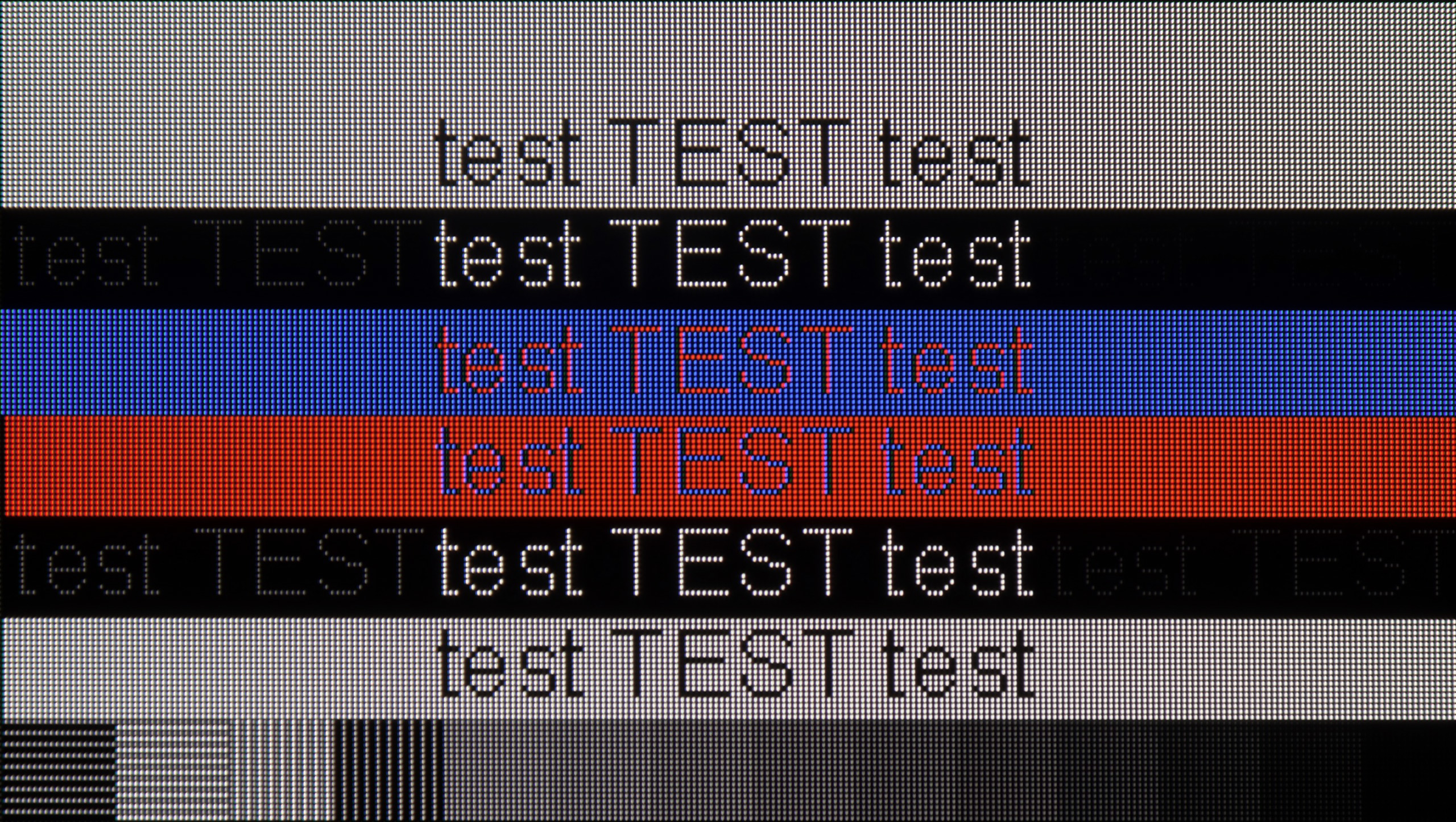
If we plan to use the TCL A300 as a computer monitor, we may be pleasantly surprised. The television performs really well in this role. It is equipped with a 144 Hz panel, supports G-Sync, and, as we mentioned, offers very low input lag, so gaming on it with a connected PC is pure enjoyment.
Working with text is also possible, although with some limitations. The TCL A300 has slight issues displaying dark fonts and thin lines – this is due to the construction of the subpixels, which in everyday use can be a bit annoying, even though it looks better in photos than in reality.
The television supports chroma 4:4:4, but only up to 120 Hz. Therefore, we noted that this feature is available, but with a limitation – if we care about perfectly readable fonts, it's worth sticking with the refresh rate of 120 Hz. At 144 Hz, the clarity of the text may suffer somewhat.
LG B5 is a television that communicates well with a computer. You won't find gaming features like 144 or 165 Hz here, but is that really necessary for anyone? Thanks to the 120 Hz panel, low input lag, and G-Sync support, it's actually a very good screen for gaming on PC. No stuttering, no tearing, with instant response.
But it's not just for gaming. The B5 can also be quite comfortable for... simply working. The television correctly supports chroma 4:4:4, so fonts are legible, interfaces are clear, and your eyes won't hurt from blurry text. This isn't obvious, even among more expensive models. However, there is one "but" – and this applies not only to the B5, but to every OLED with a WOLED panel. The RWGB subpixel arrangement can cause a slight shadow at the edges of fonts. This isn't something that stands out from the couch. It's more likely to be noticed by someone sitting close to the screen and spending half a day in Excel.
Viewing angles
3.2/10
7.4/10
The viewing angles on the TCL A300 NXTVision are, let’s be honest, average. The TV is equipped with a VA panel, which inherently has quite limited angles, and unfortunately, this is evident here. The video below speaks for itself – even a slight deviation from the centre results in a noticeable drop in contrast and colour saturation. It’s a shame that this is yet another frame-style TV that has done absolutely nothing about it. After all, we don't always have the option to sit perfectly straight on – especially if the device is also meant to serve a decorative function in the living room.
In terms of viewing angles, the LG B5 performs very well – exactly as you would expect from a WOLED panel. No matter from which side you sit, the picture retains its quality. Colours don't fade, contrast doesn't drop off sharply, and details remain clearly visible. However, it must be honestly added that this is not the level of QD-OLEDs from Samsung Display. Those manage to hold colour saturation even better under extreme angles. But if you don't plan on watching films while sitting at a 90-degree angle – the B5 is more than sufficient. It's one of those TVs that is just pleasing to look at – from any side.
TV efficiency during daytime
4.7/10
4.9/10

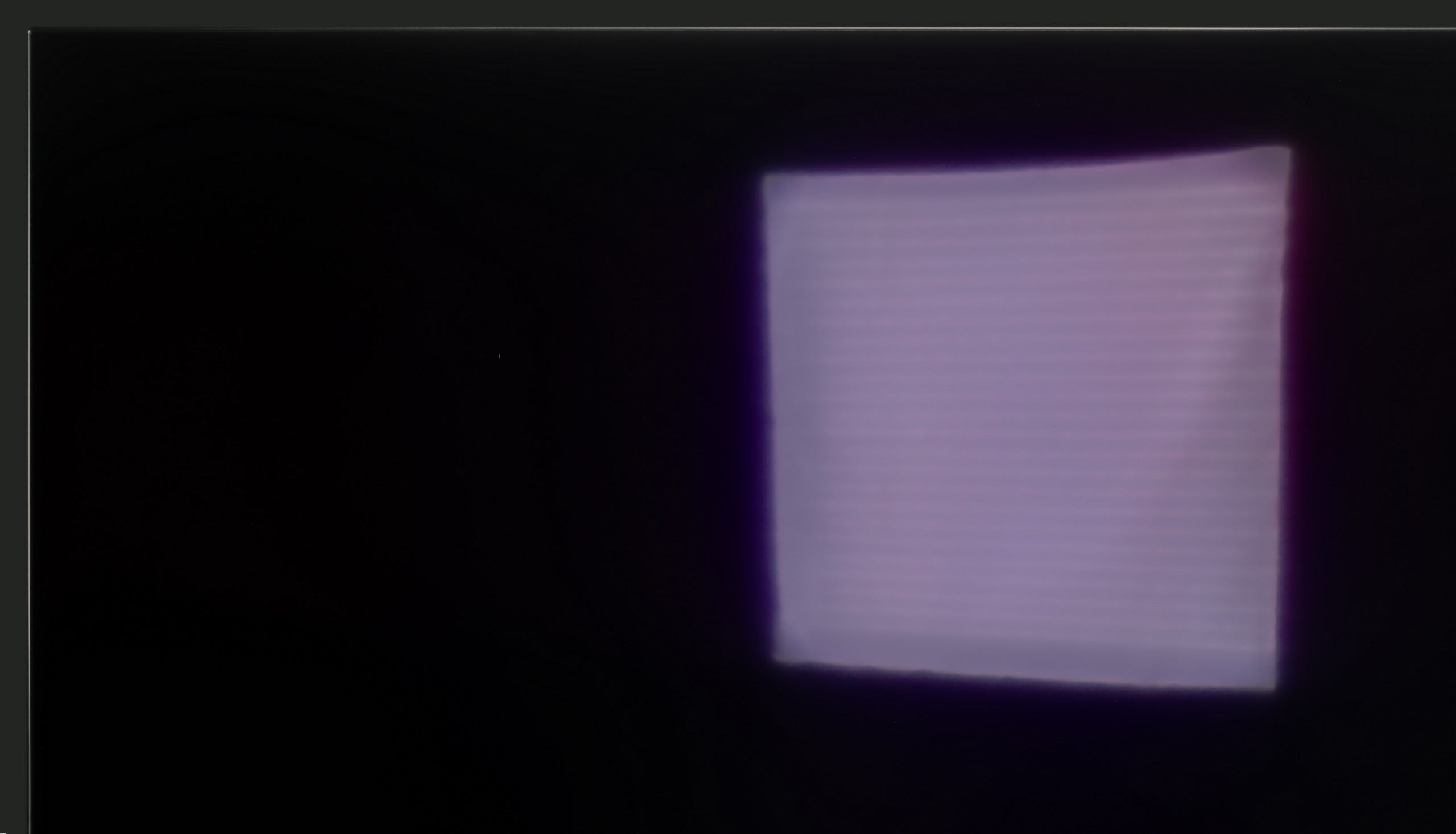


Matrix brightness
Average luminance SDR
LG OLED B5: 279 cd/m2
TCL A300W NXTVision: 388 cd/m2
The TCL A300 NXTVision is equipped with a matte panel very similar to the one found in one of its Chinese competitors – the Hisense S7NQ. This type of surface does quite well in reducing reflections, although it must be admitted that it performs worse than Samsung's The Frame, which offers a significantly higher level in this regard. As is usually the case with matte displays, blacks during the day lose depth and appear more grey than black – and this is no different here. Unfortunately, the fact that the A300 is the darkest TV of the three tested doesn’t help either. This gives it a real problem in breaking through in heavily sunlit rooms.
The LG B5 is a television that feels best after dark. But when the sun comes in, it becomes a bit of a challenge. The brightness of this model is rather average, and the anti-reflective layer… also average. There are no special coatings here that deal well with reflections or very bright daylight. So if you're planning to place this television opposite a large, uncovered window – it may simply be hard to see anything.
Fortunately, there is something worth praising: the glossy WOLED panel maintains good colour saturation. Even in difficult conditions, the image doesn't fade or become "washed out," as can happen with some television models. In general, it's watchable, but if you're looking for a television specifically "for a bright lounge room," the B5 shouldn't be your first choice.
Details about the matrix
Subpixel Structure:
Panel uniformity:

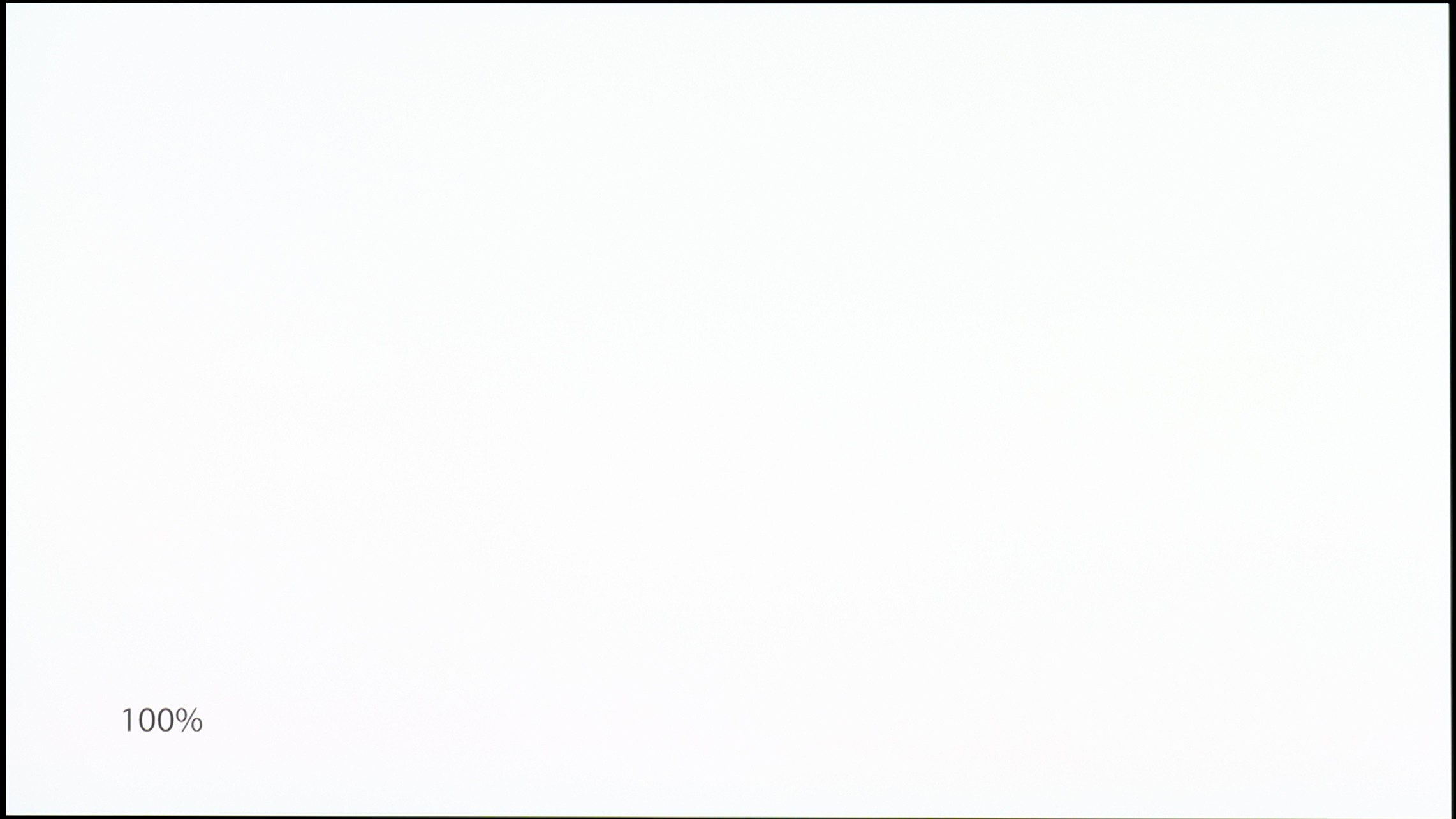
TV features
7.7/10
8.3/10
- HDMI inputs2 x HDMI 2.0, 2 x HDMI 2.1 48Gbps0 x HDMI 2.0, 4 x HDMI 2.1 48Gbps
- OutputsToslink (Optical audio), eARC (HDMI), ARC (HDMI)Toslink (Optical audio), eARC (HDMI), ARC (HDMI)
- Network InterfacesWi-Fi 2.4GHz, Wi-Fi 5GHz, Ethernet (LAN) 100MbpsWi-Fi 2.4GHz, Wi-Fi 5GHz, Ethernet (LAN) 100Mbps
- TV receptionDVB-T, DVB-T2, DVB-S, DVB-S2, DVB-CDVB-T, DVB-T2, DVB-S, DVB-S2, DVB-C
Classic features:
- Recording to USB (terrestrial TV)
- Recording programming
- Picture in Picture (PiP)
- RF remote control (no need to aim at the screen)
- Backlit remote control
- Teletext
- Audio only mode
- Possibility to connect Bluetooth headphones to the TV
- Possibility to simultaneously use Bluetooth headphones and the TV speaker
Smart features:
- AirPlay
- Screen mirroring (Windows Miracast)
- Wyszukiwanie głosowe
- Voice search in native language
- Ability to connect a keyboard and mouse




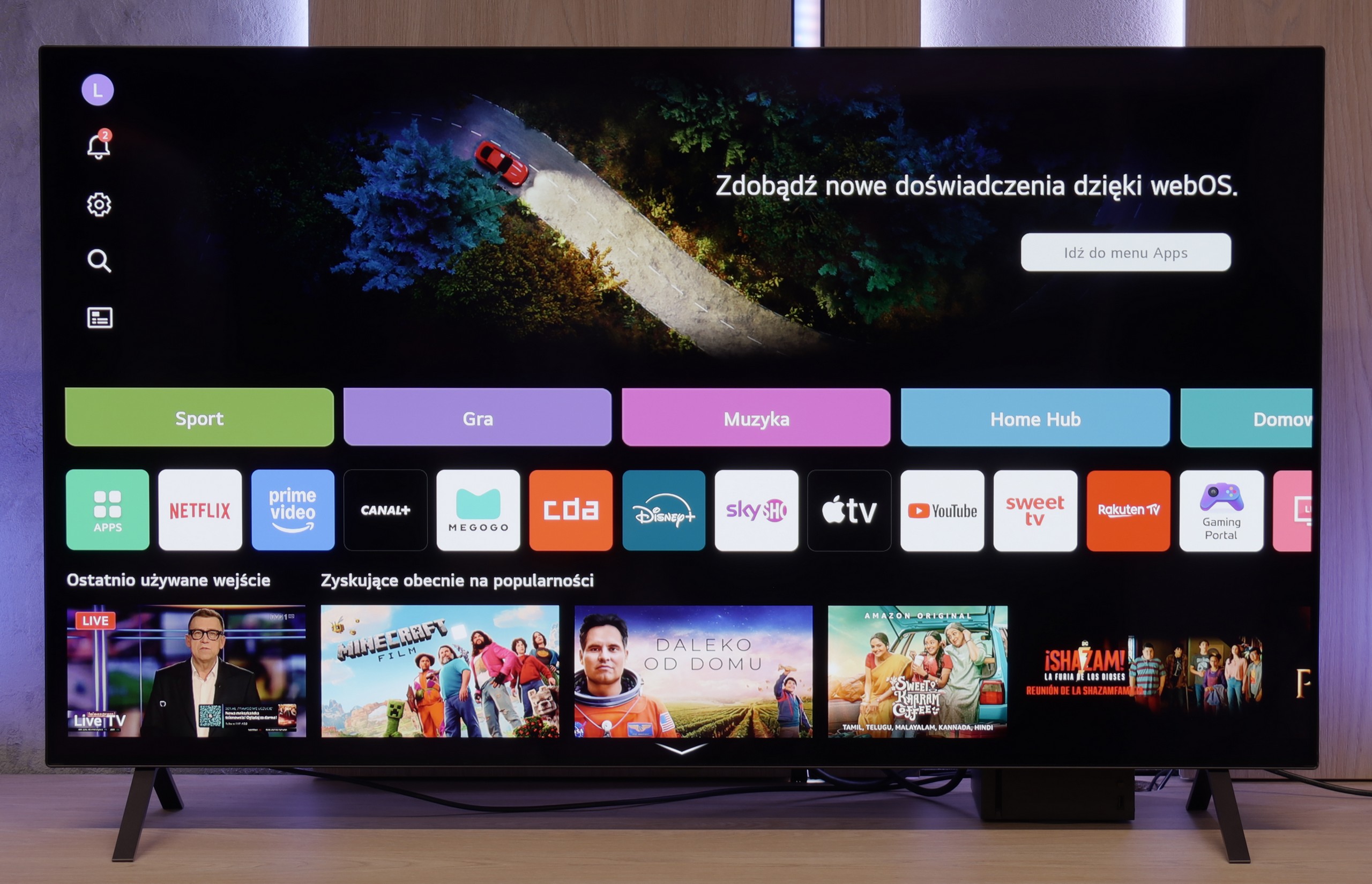
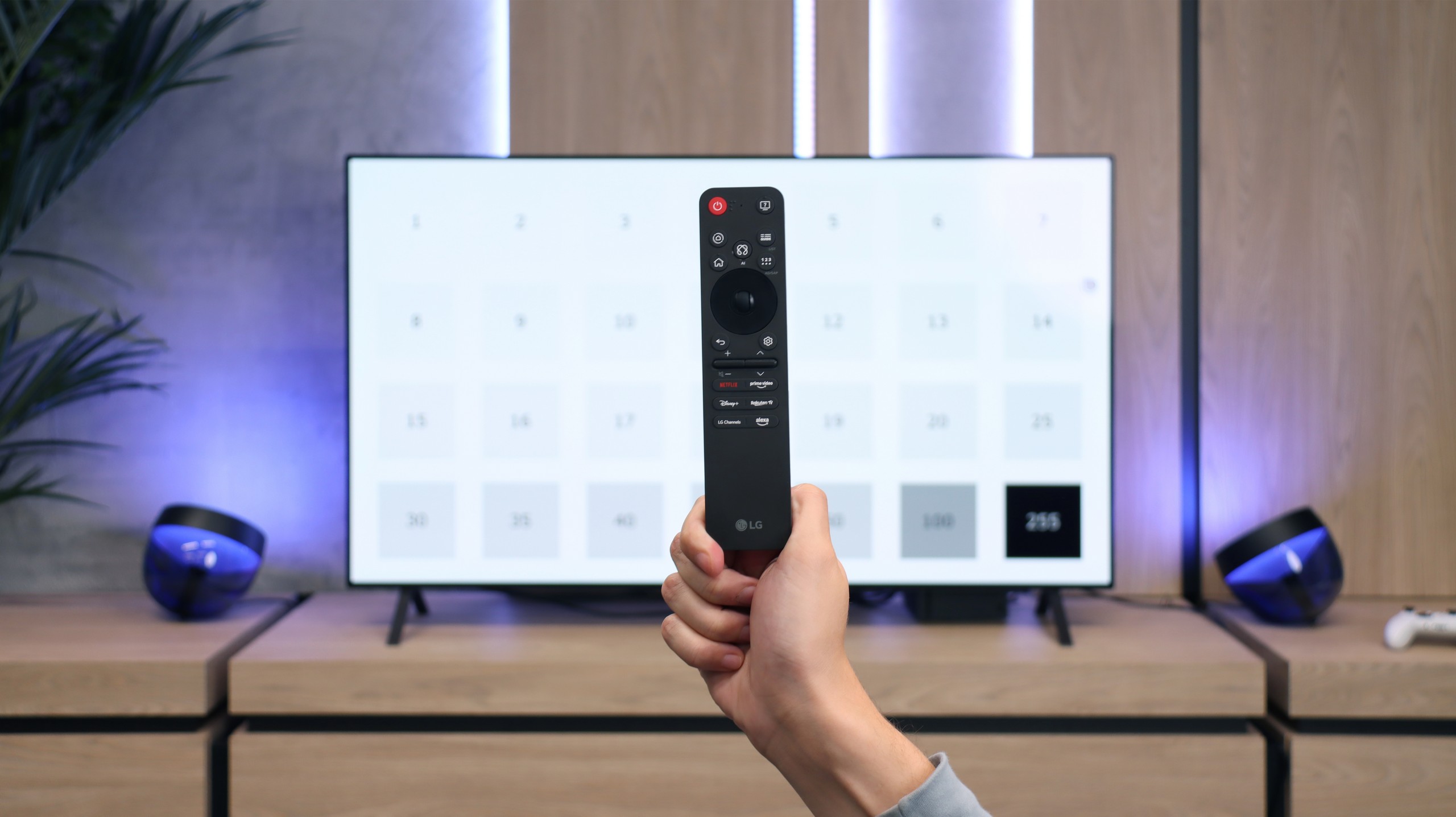
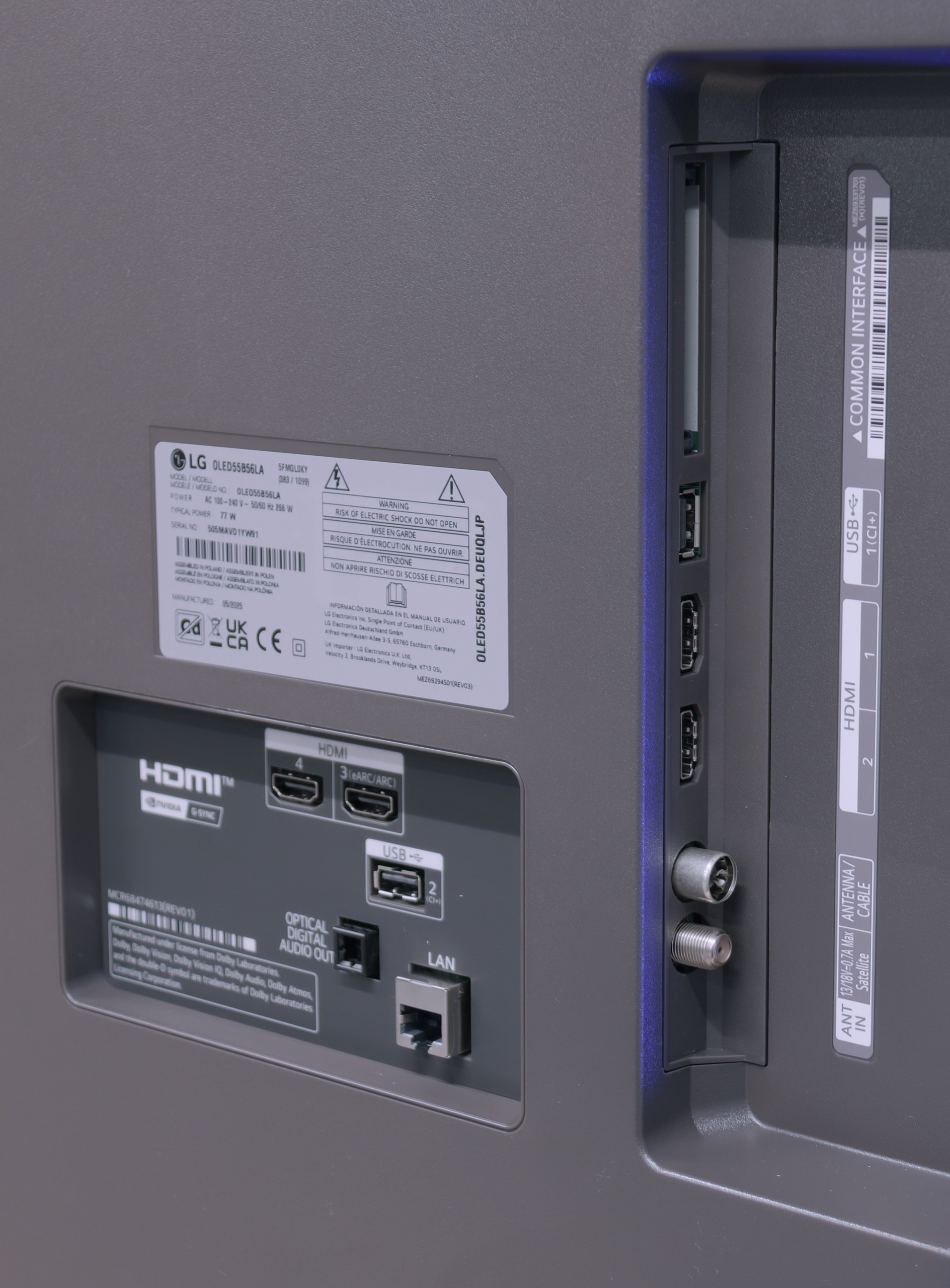
TCL A300 is a television styled as a painting, which in everyday use can successfully pretend to be a work of art hanging on the wall. It is equipped with a special image display mode, additional frames in a light wood tone, and a flat wall mount that allows you to hang the television like a real painting – without any gap from the wall.
A significant advantage of the image mode is that it is completely free. We have access to several dozen works from which we can choose one to be displayed while in standby – instead of a black screen, the image we selected remains on the wall. The quality of graphic reproduction is okay, but it must be admitted that it clearly falls short of that from Samsung's ART Store. Although access to images there is paid, the quality of the scans is significantly better – you can see the texture of the paint, canvas, and details. In the TCL A300, it resembles high-quality photos rather than realistic reproductions of artworks. Additionally, the implementation of the image mode in the system leaves a lot to be desired. For example – if we set the brightness to 10% in image mode, that same value automatically transfers to the regular viewing mode, where we could easily set the brightness to 50% or even 100%. It also works the other way around – when we set the brightness to 100% in regular mode, after switching to gallery mode, the images are displayed with the same maximum brightness, shining too intensely and losing the whole effect of a “picture on the wall.” These are minor but irritating errors that can spoil the experience of what was supposed to be visually subtle and elegant.
Moving on to more classic functions – the A300 runs on the Google TV system, which currently offers by far the largest selection of applications (full list available below). The responsive voice assistant with support for the Polish language also deserves a big plus. As standard – as with most TCL televisions – the USB recording function or picture-in-picture (PiP) mode was missing.
Functional Features
Even though the LG B5 is modern equipment, it hasn’t forgotten those who simply want to... watch television. No apps, no accounts, no logging in anywhere. We have built-in DVB-T2 tuners and the ability to record onto USB, with a clear and fast EPG guide. Is that not enough? There’s even a working teletext – for many, surely a relic, for others, a daily occurrence. A plus is also the option to turn off the picture and just keep the sound, which works great for listening to music. And if you want to watch quietly – you can easily pair Bluetooth headphones, without wrestling with settings and without delays. Everything works as it should.
SMART TV: webOS
The biggest distinguishing feature of the webOS system – still! – remains the way you control it. The Magic remote, which we get with the LG B5 (in our version B56 – the one without the numeric keypad), works like a magic wand. We point, click, select. And it simply... works. Intuitively, quickly, and without unnecessary clicking left and right. Added to this is the AI voice assistant – quite efficient. You can summon it directly from the remote and use your voice to search for content, change settings or switch sources. WebOS may not be the most "modern" system on the market, and built-in ads can be annoying, but when it comes to ease of use – especially with the Magic remote – it still stays one step ahead of the competition.
Playing files from USB
8.9/10
8.6/10
Supported photo formats:
Maximum photo resolution:

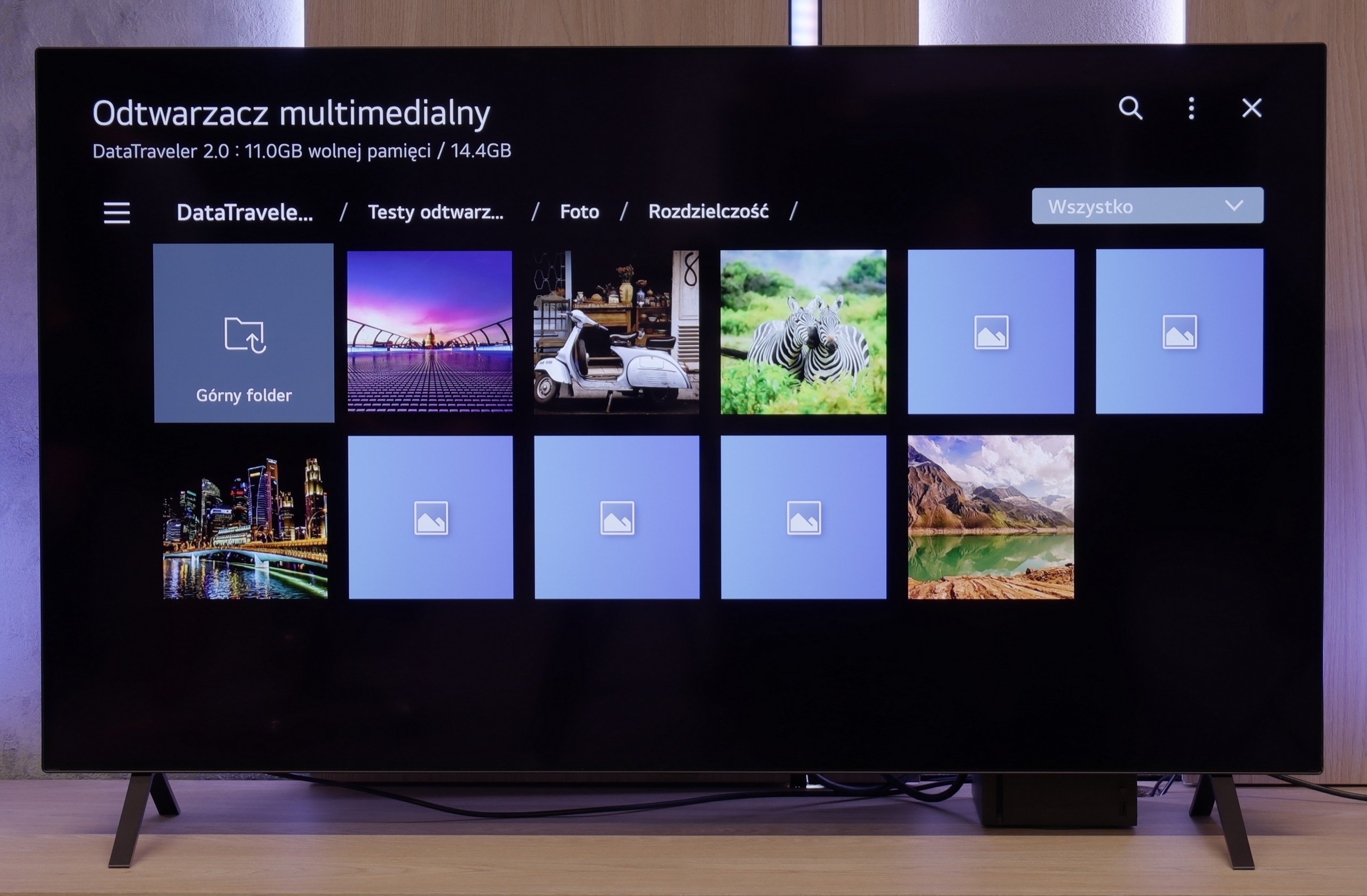
The built-in player on the TCL A300 works as it should – most popular video and photo files play without any problems. It lacks support for Apple's HEIC format (which is quite common in many TVs), but most users still use AirPlay, so it shouldn't be a major issue. If someone isn't satisfied with the default player, the Google TV system offers plenty of options – you can easily install an alternative app that better suits your tastes. Nevertheless, it's worth noting that the factory solution is completely sufficient for everyday use.
LG B5 handles USB files as it should. Most popular formats work seamlessly, and subtitles – even with Polish characters – are displayed correctly. You can comfortably play a movie from a USB drive or have a weekend slideshow of your holiday photos without worrying that something will go wrong. However, there was a surprise with files in HEIC format – that is, photos saved by Apple devices. While the LG C5 had no issues with them, the B5 stubbornly refused to cooperate and was unable to display them. A little hiccup that probably won’t affect everyone, but it’s worth knowing about.
Apps
9.6/10
8.7/10














































Sound
6/10
7/10
- Subjective sound quality:6/107/10
- Dolby Digital Plus 7.1:
- Dolby True HD 7.1:
- Dolby Atmos in Dolby Digital Plus (JOC):
- Dolby Atmos in Dolby True HD:
- DTS:X in DTS-HD MA:
- DTS-HD Master Audio:
When it comes to sound, the TCL A300W – like its competitors – sounds quite... flat, after all, we are talking about a super slim television. For everyday watching of news or series, this level is more than sufficient, but during movie screenings, we might noticeably miss depth and space. On a positive note, it’s worth mentioning that the television supports both Dolby Atmos and the increasingly rare DTS:X – which provides more options when connecting an external audio system. It’s also worth noting that the A300 PRO model is equipped with a dedicated, flat soundbar. And it’s no ordinary soundbar – it sounds better than most of the televisions we’ve tested.
We didn't expect miracles – after all, the LG B5 doesn't have an advanced audio system, and its built-in speakers look... well, just like the majority of flat-screen TVs. And yet – it actually sounded quite nice. The dialogues are clear, the sound isn't booming, and during a quieter viewing, we didn't immediately feel the need to plug in a soundbar. It's just a shame that this year LG decided to cut something that worked in the previous generation. We're of course talking about support for DTS formats, which we won't find in the B5. If you have movies encoded in that format – you'll need to rely on an external player.


